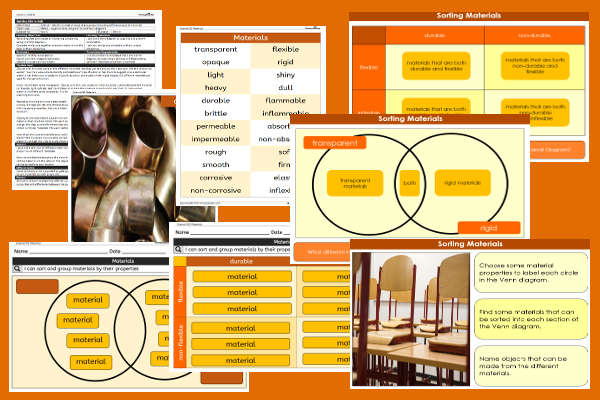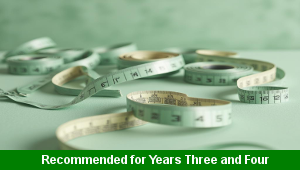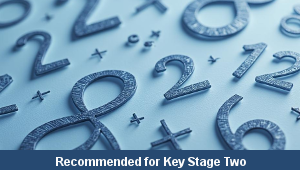Lesson One – Sorting Materials

This science teaching pack for Key Stage Two gets the children to identify and record a range of ways of grouping and sorting different types of materials by their matching properties such as flexibility and absorbency.
The class can present and organise the selected materials using Venn and Carroll diagrams to indicate their matching properties.
Download this teaching pack including a lesson plan, classroom activities and an interactive presentation to teach the children to identify and record a range of ways of grouping and sorting different types of materials by their matching properties
Activities in this teaching pack include display posters to identify and describe the properties of different materials, templates to group and sort a range of different materials by their matching properties using Venn and Carroll diagrams.and a vocabulary word bank to help sort a range of different materials into matching groups.
The interactive presentation gets the children to explore ways of grouping and sorting different types of materials by their properties.
This lesson is part of a science scheme of work to get the children to investigate and test the properties of different types of materials including durability, opacity, strength and conductivity. There are teaching activities for shared learning, differentiated worksheets to support independent learning and interactive presentations to introduce concepts and key skills.
-

Length Calculations
Practise using number calculations skills for addition, subtraction, division and multiplication when solving problems related to length measurements
-

Maths Calculations Assessment
Assess abilities in solving a range of different number problems for addition and subtraction when working with informal and formal written calculations
-

Determinant Lists
Explain and model how to make lists of objects used and found in different locations to match the correct determinants of a and an
-

English SPAG Assessment
Assess abilities in composing sentences for fiction and non-fiction using the correct spellings, punctuation marks and grammar vocabulary phrases
